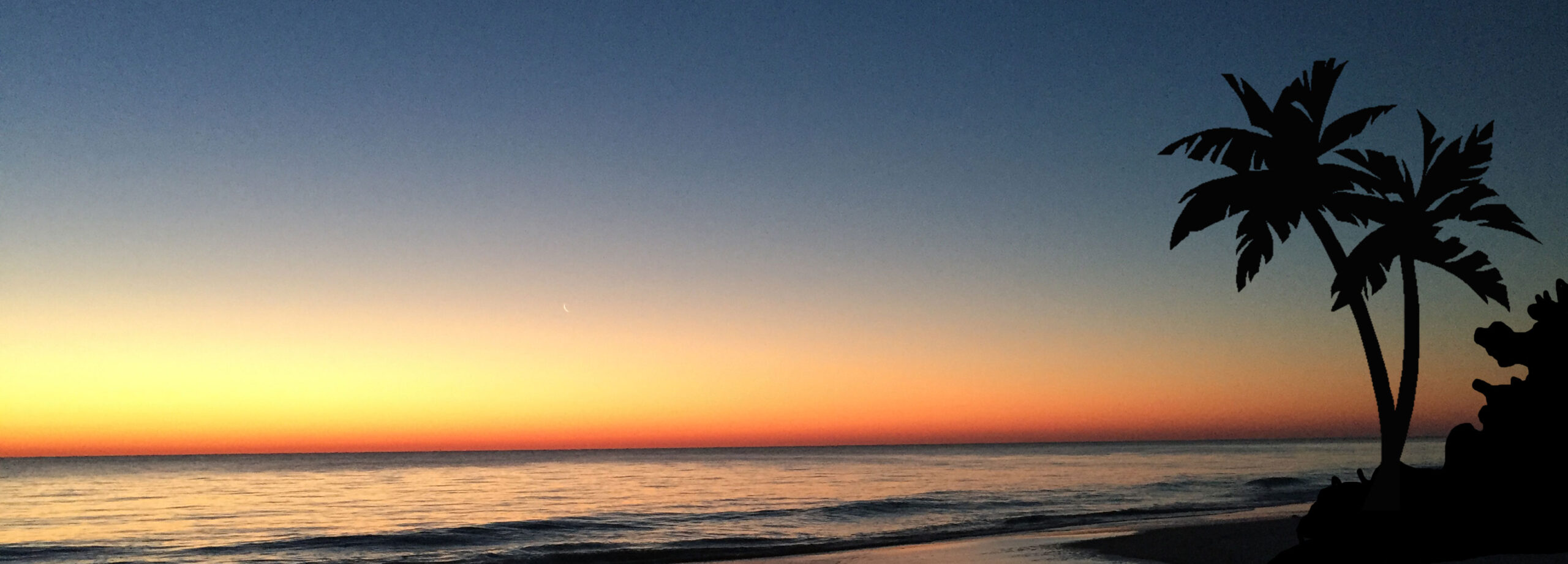Coprolite is the scientific name of fossilized poop. I don’t know very many children whose interest would not be sparked by that topic. It is so unusual, and generally taboo to discuss in “polite” society.
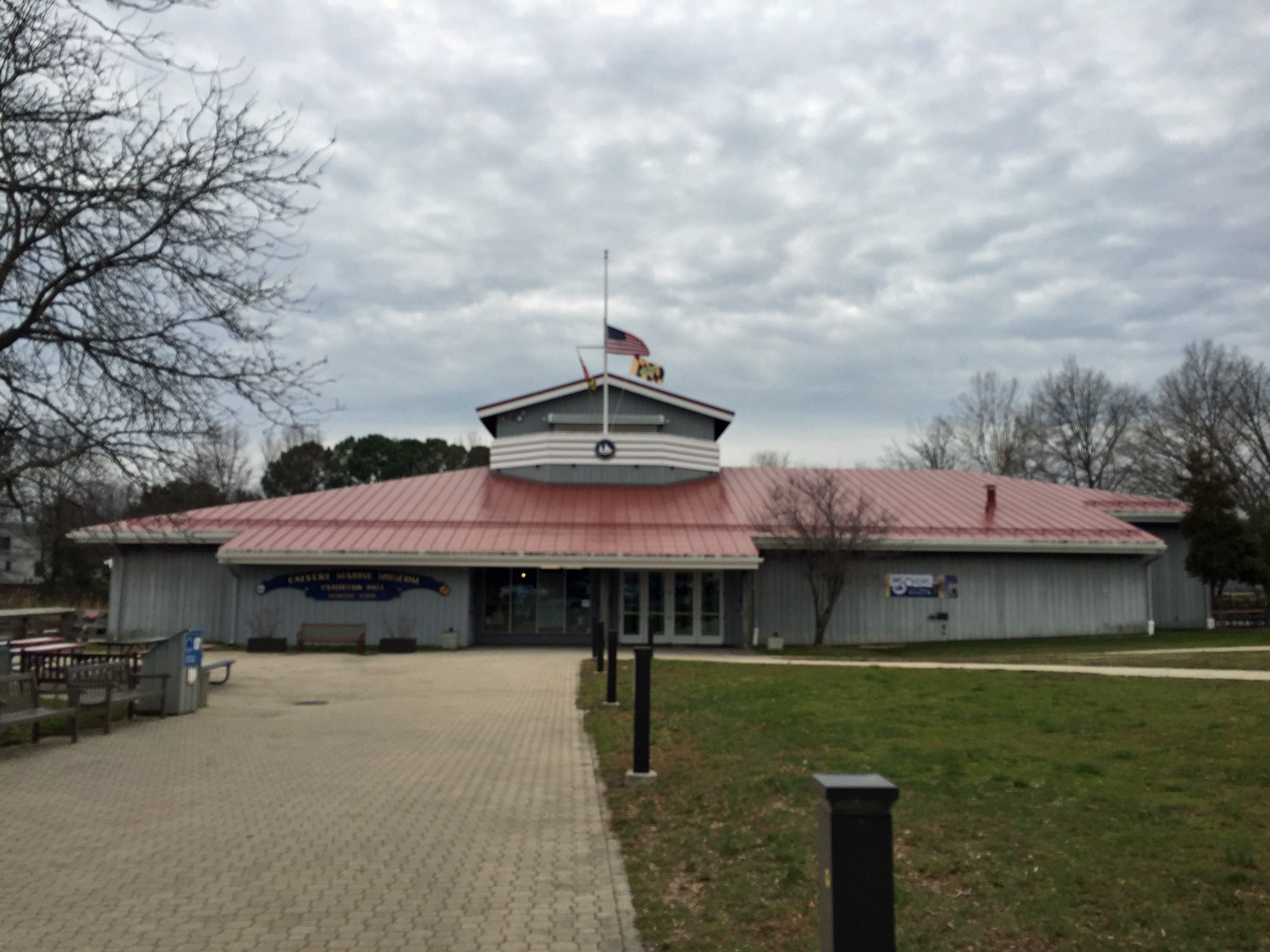
On February 20, 2022, the Calvert Marine Museum hosted the first Universal Coprolite Day. They decided that Sunday the 20th was a better day to celebrate than Tuesday the 22nd.
I decided to attend the Coprolite Day in order to learn about fossilized poop. I also wanted to learn how scientists can use coporlites to better understand prehistoric animals.
When I arrived at the museum, the museum’s fossil club volunteers and the museum’s paleontologists had set up 5 coprolite learning stations. The stations were sprinkled throughout the museum. They were very interesting and hands-on. We were encouraged to touch the coprolites and participate in the activities.
Coprolite Slide Show
One station was an extensive slide show on a large screen. It was a continuously running show, so you could view as many slides as you wished.
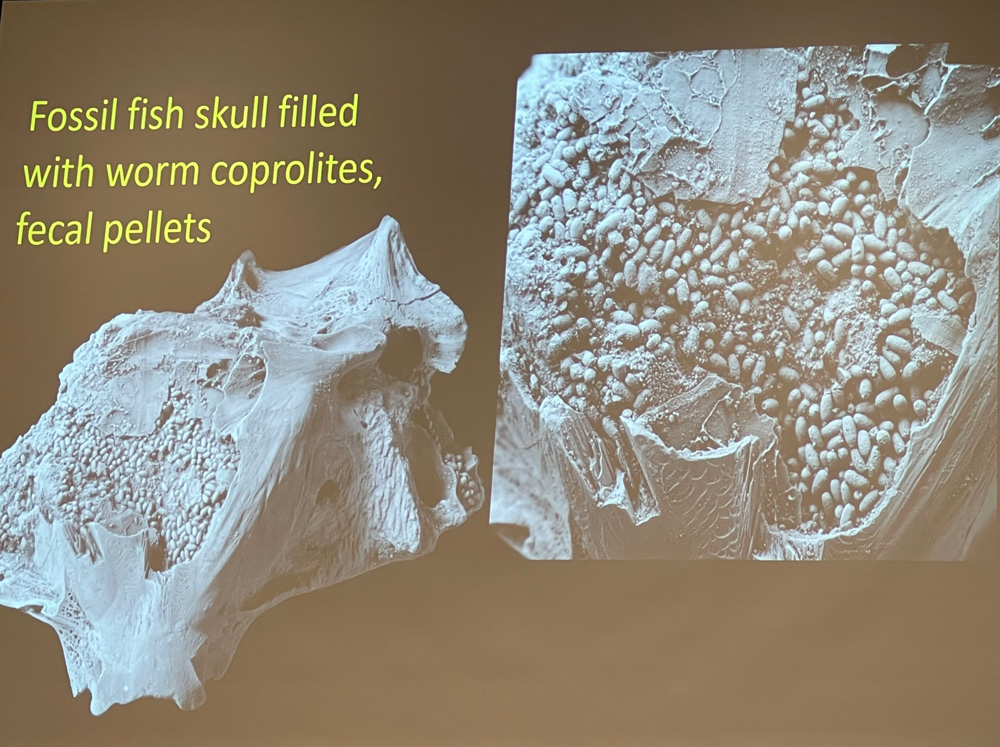
One slide showed little oval pellets in the skull of a fossilized fish. The oval pellets were also fossilized. Paleontologists recognized the oval pellets as poop from worms. They think that worms were eating the brain of the dead fish when everything was buried and then eventually fossilized. The paleontologists are not surprised that no worms were found because worms have soft bodies that do not usually become fossils.
I was impressed by the size of this crocodilian coprolite. Can you imagine the size of the crocodile if this was just his poop?
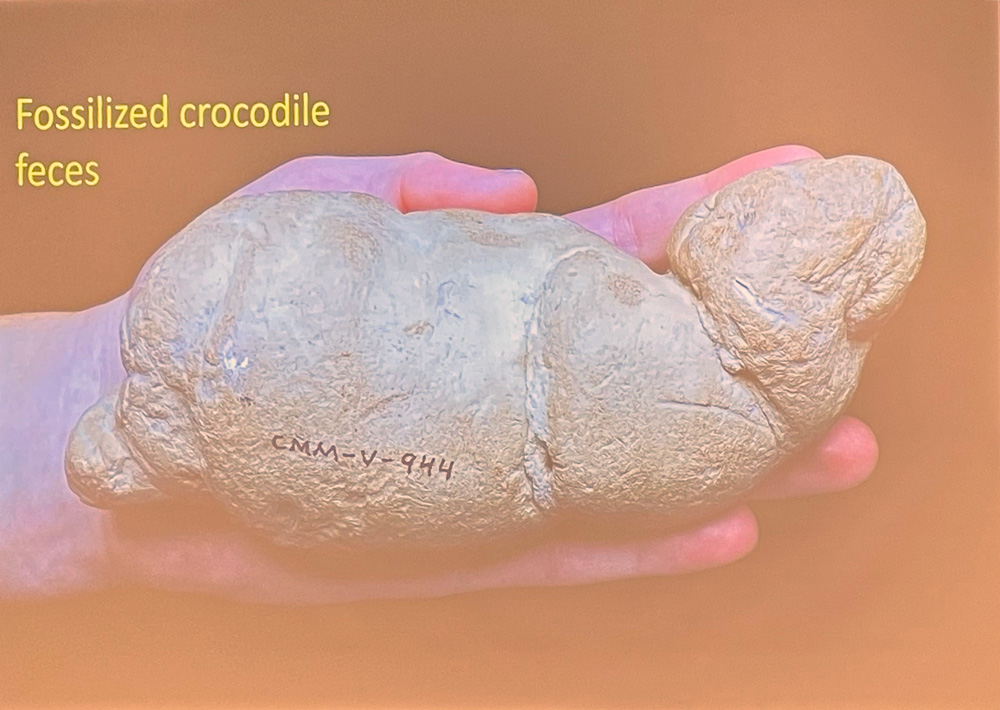
Coprolite Samples
In another station, some of the museum fossil club members shared displays of fossils that they had found. They were all very willing to share their fossils and answer questions from the visitors.

One of the club members showed a shark coprolite that had a chunk missing. He explained that some animal must have taken a bite of the poop before the poop was fossilized.
The idea of eating poop is not appetizing, but someone has to eat poop or the world would become filled with poop. I am just glad it doesn’t have to me eating the poop.
Another club member had an interesting book. (Uncover A Shark by David George Gordon) It showed the spiral shape of the poop being formed in a modern shark’s intestine. This is how paleontologist identify shark coproplites. Can you see how the shark coproplite has a spiral shape in this picture and in the picture above?
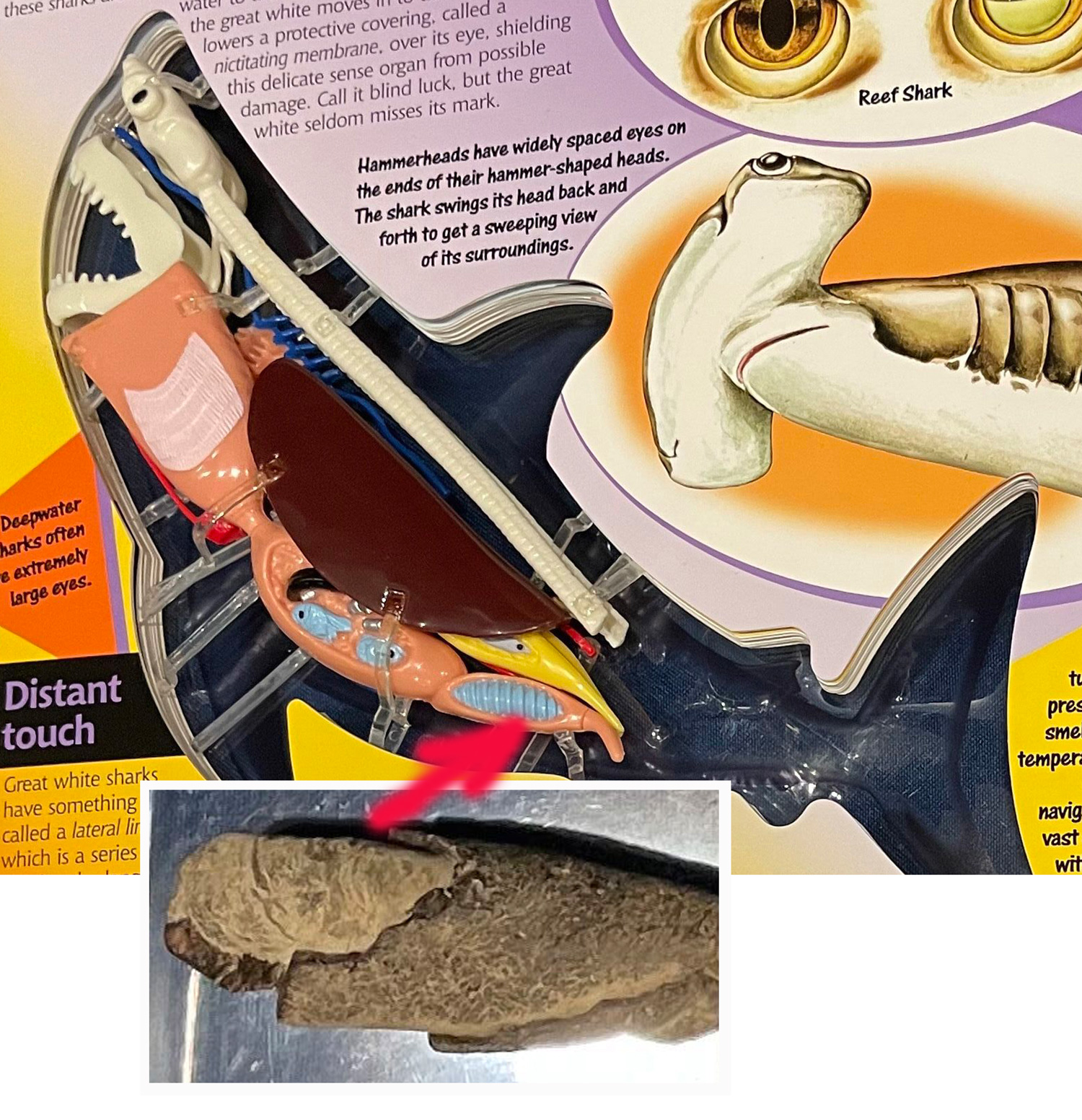
Coprolite to Animal
The theme of the next station was identifying which animal pooped, thus creating the start of a coprolite. Paleontologists compare the poop of modern animals to the prehistoric coprolite.

The presentation was in the form of a matching game. Five coprolites were displayed in separate boxes on the table. Five pictures of modern animals in the process of pooping were randomly placed on the table. The audience was asked to match the picture to the coprolite.
I had fun matching the pictures with the coprolites. I have recreated a little match game for you. Can you match the modern poop in the pictures in the top row with the photograph of the coprolite in the second row?
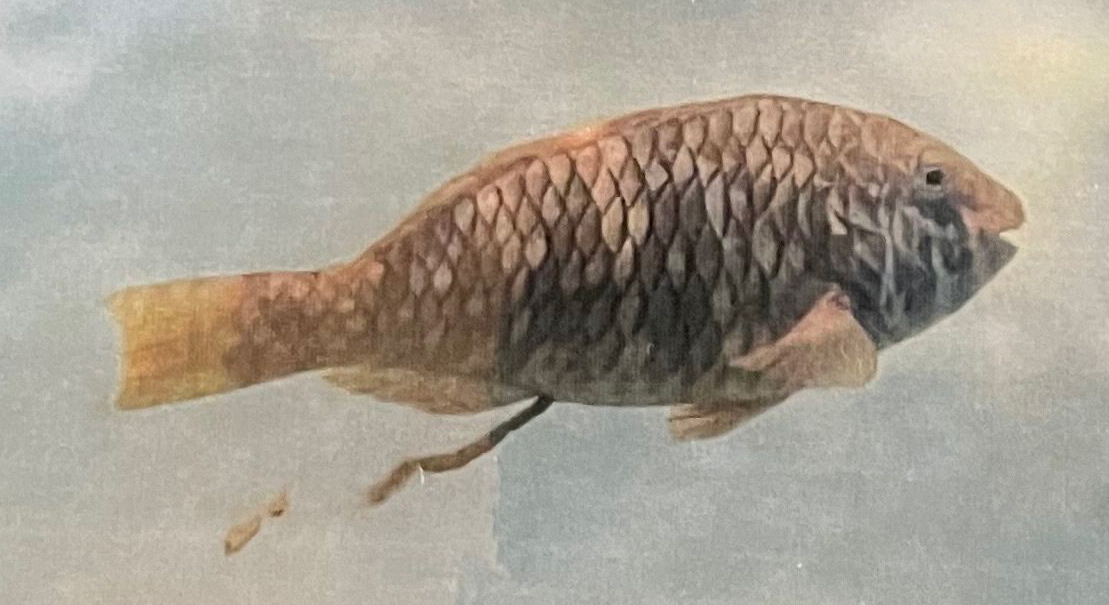
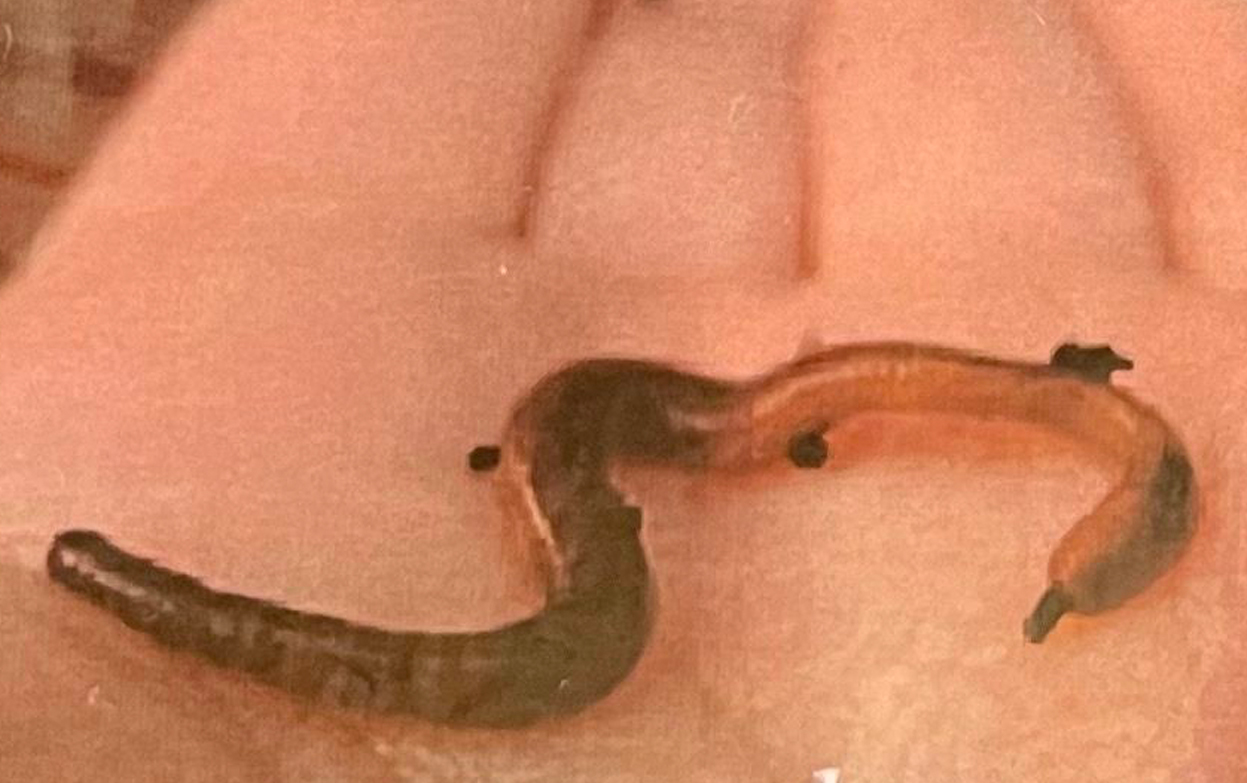
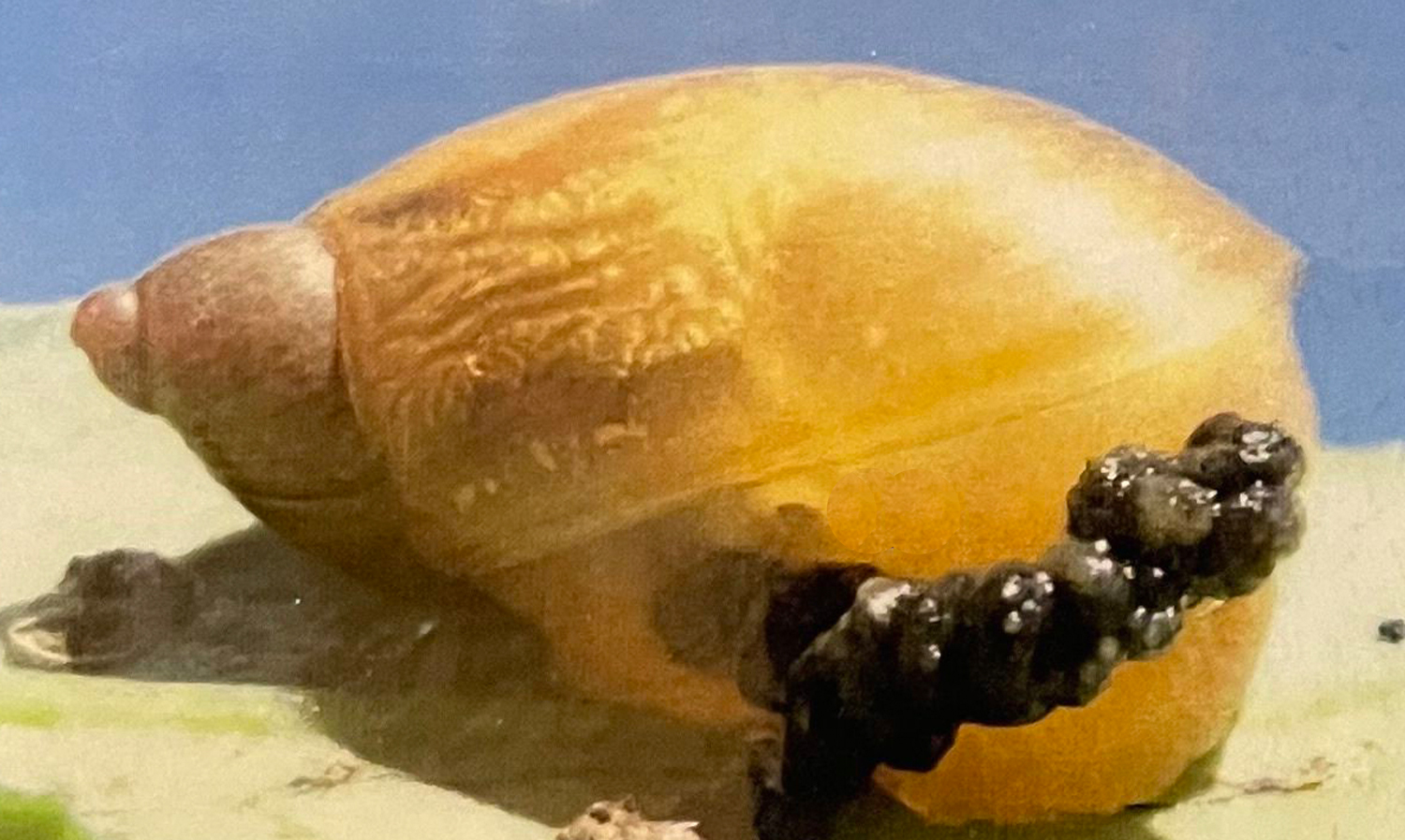


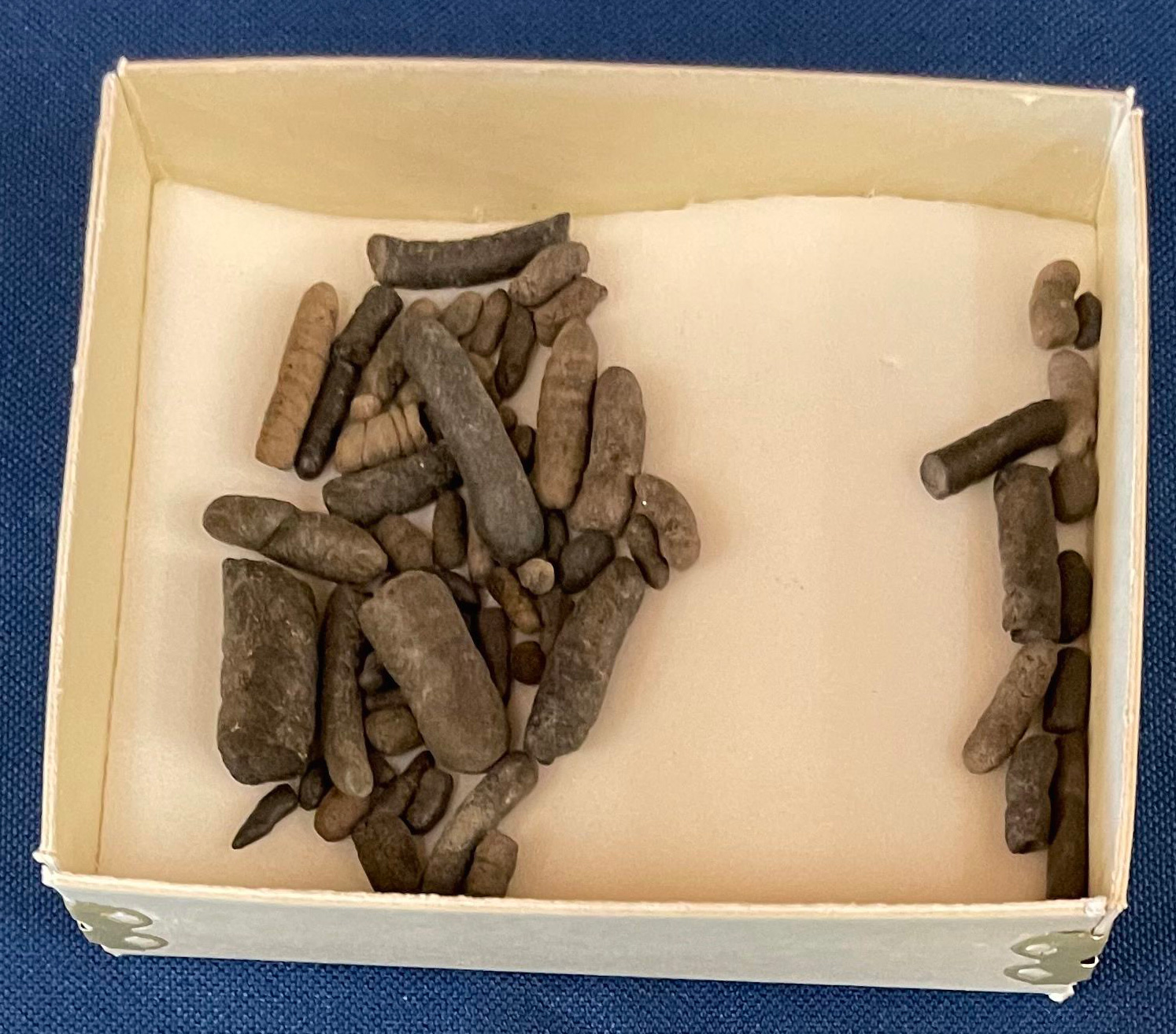
Poop to Coprolite
The fourth station was about how the soft poop of an animal becomes a hard, fossilized coprolite. Most animal poop is eaten by other organisms. This makes fossilized poop very rare.
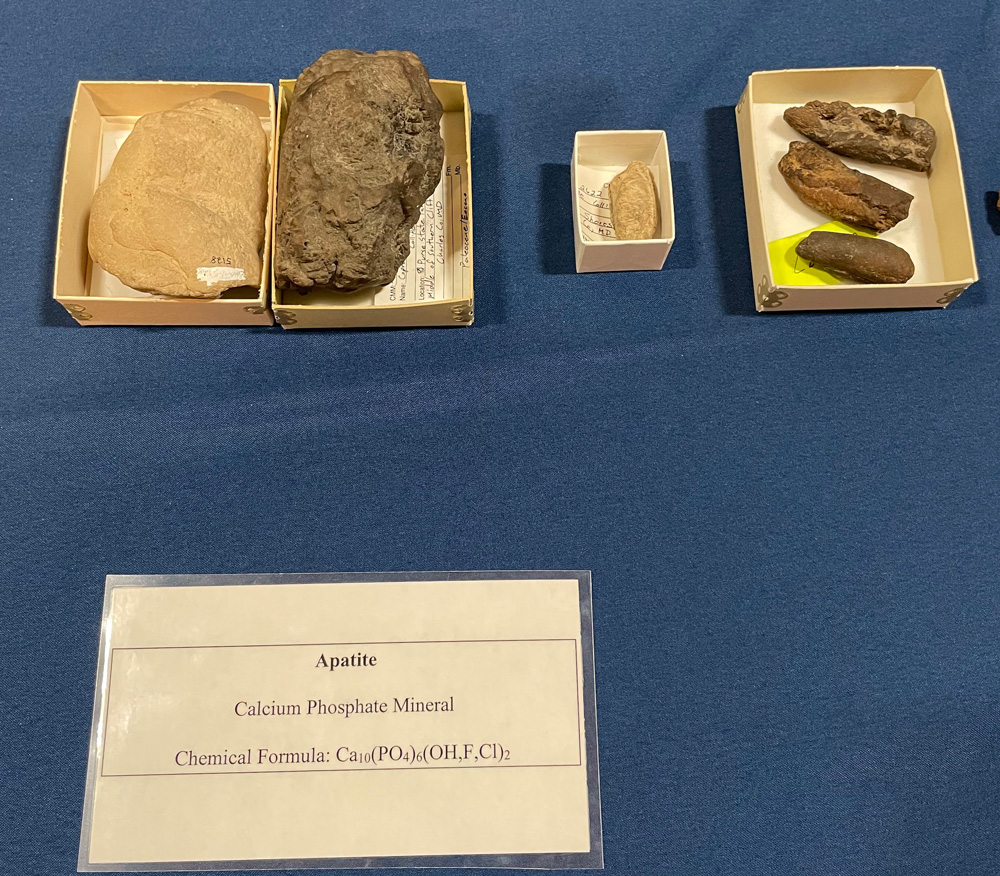
I learned that the soft poop is transformed into a hard coprolite if the poop is covered quickly by sediment and minerals replace the original material of the poop.
Understanding Coprolites
The last station demonstrated some of the things that paleontologists have learned from the study of coprolites. A coprolite can tell the paleontologist about the kind organisms that were eaten by analyzing the composition of the coprolite. It is more difficult to identify the animal that actually created the poop.
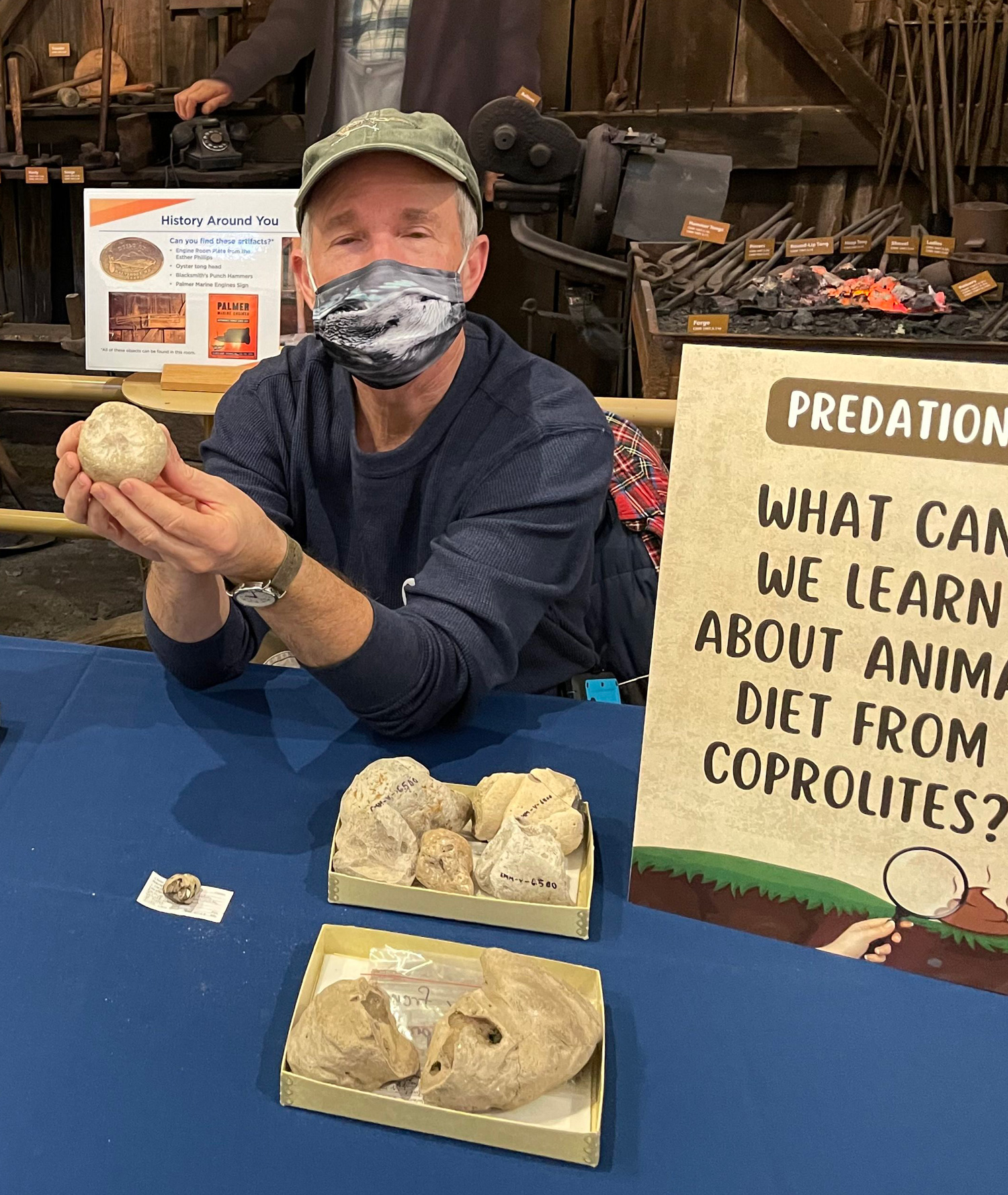
The museum paleontologist in the picture is holding a rare coprolite. It is the end of the poop. It shows the marks of the sphincter muscles that pinched the poop out of the animal’s body and closed off the rectum.
This is a close up picture of that coprolite. Can you see the little knob on the coprolite? That is the end of the poop that was squeezed out of the animal. It is amazing that this knob was preserved while the poop was becoming a fossil.

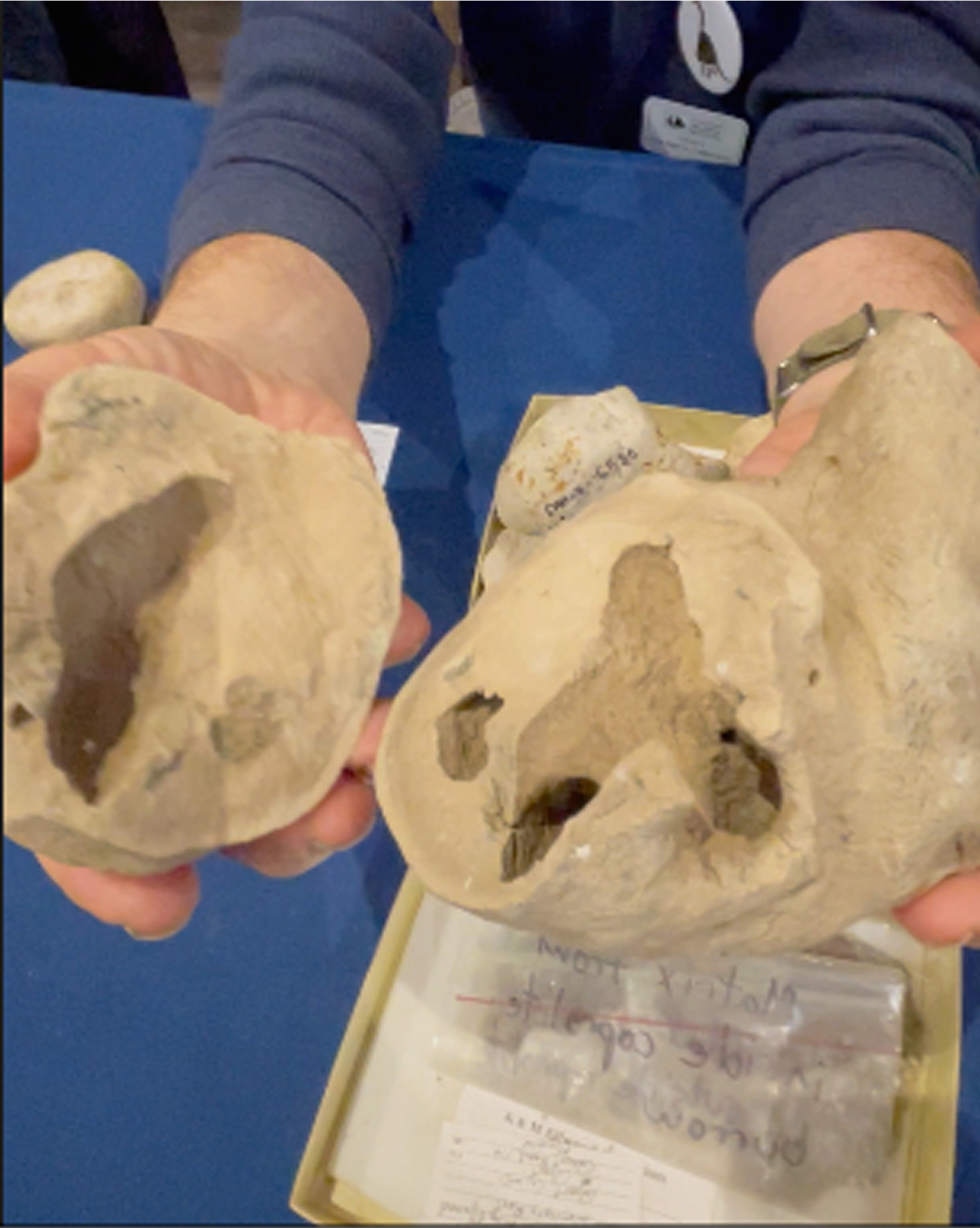
Sometimes worms or other animals eat the piece of poop, leaving tunnels in the poop as they eat. When the poop is fossilized, the tunnels become permanent. In this picture the paleontologist has broken open a crocodilian coprolite to show the tunnels.
Sometimes an animal takes a bite out of the outside of the poop. The marks left by the teeth can be used to determine who took the bite.
The straight marks on the coprolite in this picture are much like the marks made by a modern gar fish. A volunteer is matching the teeth (in a jaw bone) of a gar fish to the marks on the coprolite.
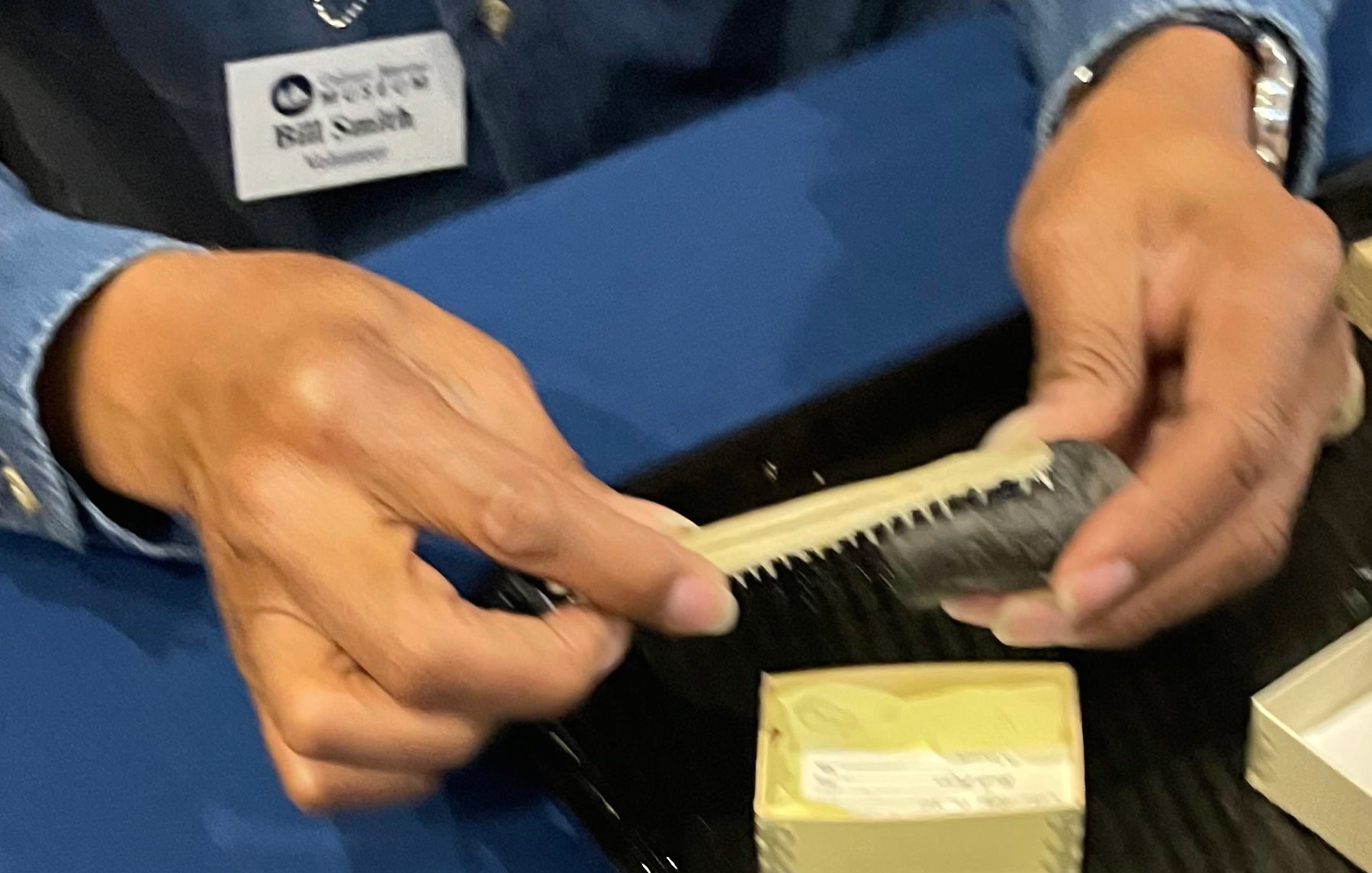
Eatable Coprolites
The Calvert Marine Museum has a store filled with items like jewlery, books, toys, and stuffed animals.
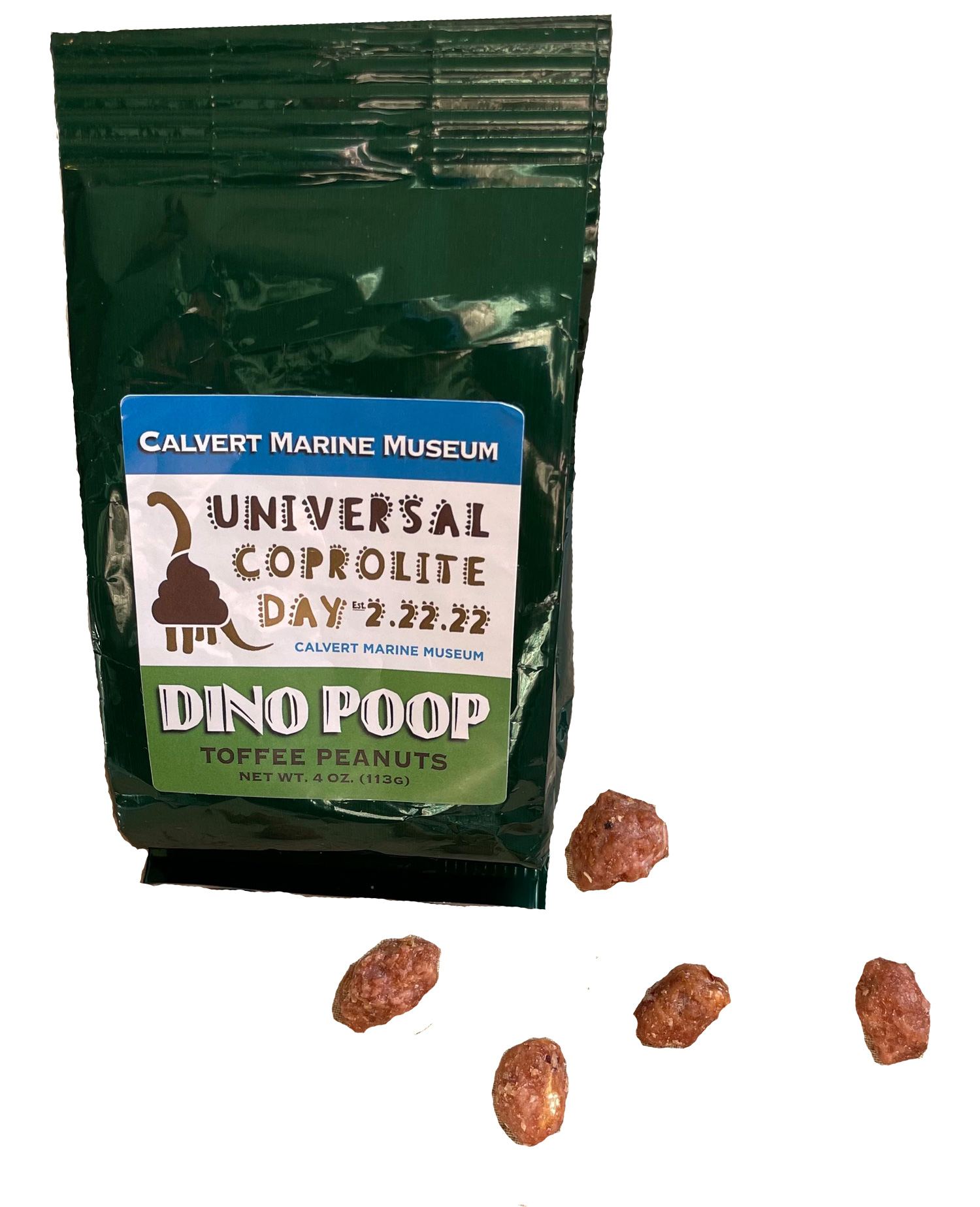
One item was ordered especially for the Universal Corprolite Day. They had ordered bags of “Dino Poop” that could be eaten. When I got to the store, there was only one bag left. Inside I found toffee-covered peanuts. This poop was delicious to eat.
Additional Field Trip Information
If you are interested in the location and contact information for the Calvert Marine Museum or more information about coprolites, then click on the button below.
Field Trip Activity
Would you like to help your children benefit even more from the special day at a museum?
Join me in an additional Field Trip Activity.
